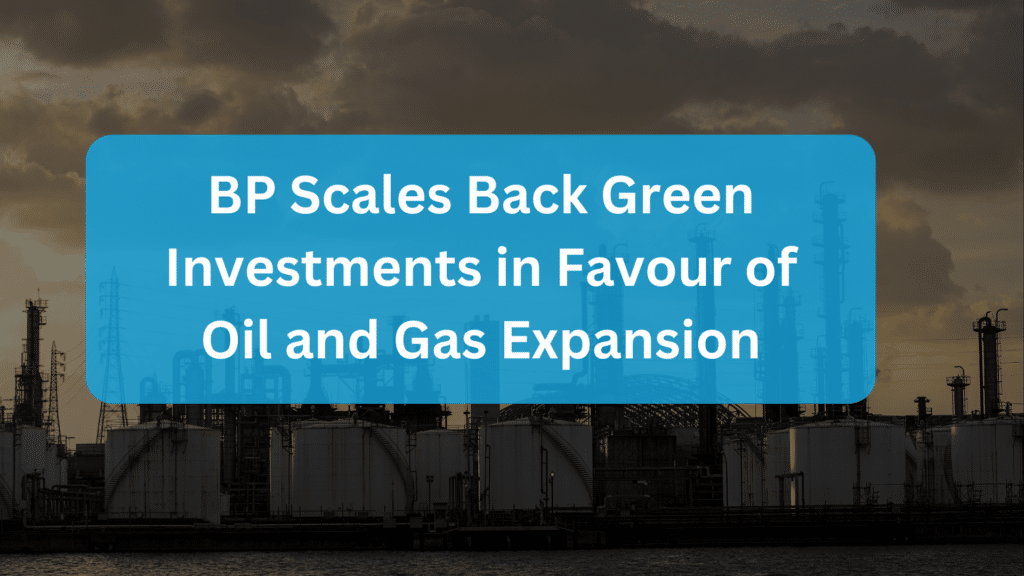
BP Scales Back Green Investments in Favour of Oil and Gas Expansion
BP has announced a significant shift in its energy strategy, scaling back its renewable energy investment while ramping up its focus on oil and gas production. The company will reduce its renewable investment by £3.95bn annually, bringing the total down to between £790m to £1.58bn. Meanwhile, funding for further oil and gas extraction will increase to £7.9bn per year.
A Return to Fossil Fuels
New major oil and gas projects are set to begin by the end of 2027, with an additional eight to ten projects expected to launch by 2030. While BP will maintain selective investments in biogas, biofuels, and electric vehicle (EV) charging, its commitment to wind and solar energy will be limited to “capital-light partnerships.”
Under previous CEO Bernard Looney, BP had originally aimed to cut its oil and gas output by 40% by 2030. However, that target was later revised to 25% in 2023, and has now been completely scrapped. Instead, BP plans to increase production to between 2.3 million and 2.5 million barrels of oil per day by 2030.
Pressure from Investors
The shift in strategy comes amid pressure from activist investor Elliott Management, which recently acquired a 5% stake in BP. Elliott is known for pushing companies to boost shareholder value, and there were reports it was advocating for the sale of BP’s renewable energy division.
BP’s share price has struggled in recent years, dipping below its all-time high in early 2023. Profits have also declined from the record-breaking levels of 2022, and its financial performance has lagged competitors. To address this, CEO Murray Auchincloss announced in January that BP would cut its workforce by 5%, reducing headcount by 4,700, with the goal of achieving £1.62bn in cost savings.
A Climate Contradiction?
BP’s strategic shift comes at a critical time for climate action. The International Energy Agency (IEA) has warned that new fossil fuel projects are incompatible with the globally accepted target of limiting warming to 1.5C. In fact, from June 2023 to May 2024, global temperatures temporarily exceeded this threshold, highlighting the urgency of reducing emissions.
Despite this, BP joins a broader trend of energy giants retreating from green investments. With political shifts, such as US President Donald Trump’s pro-fossil fuel stance, and pressure from investors prioritising short-term profits, the industry appears to be leaning back into traditional energy sources.
How does gas detection play its part?
With BP doubling down on oil and gas, keeping their workforce safe is more important than ever. Expanding production means a greater risk of gas leaks, toxic exposure, and potential explosions. Gas detection systems help prevent disasters before they happen and ensure safety across operations.
Both fixed and portable gas detectors will be essential in monitoring harmful gases like methane, hydrogen sulphide, and carbon monoxide. With production ramping up, BP will need to invest in advanced gas detection technology to stay compliant with regulations and reduce risks.





